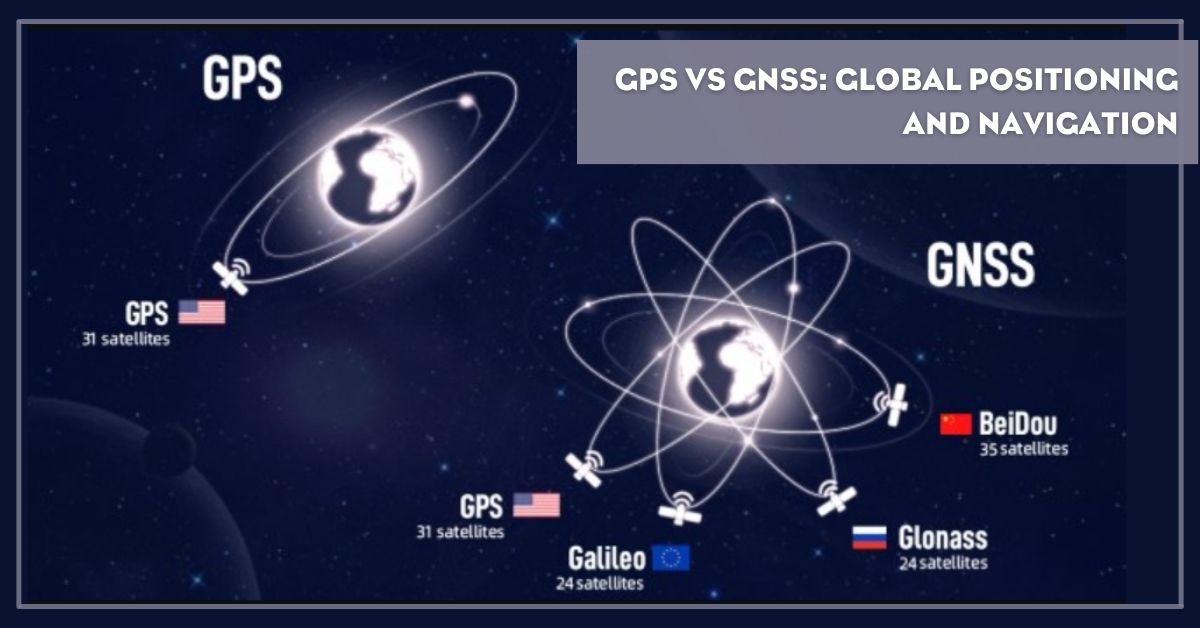GPS vs GNSS: Technologies for Global Positioning and Navigation
Posted by Philip Hanrahan B.E., B.A., M.I.E.I.; Andrii Balan M.Sc. (Surveying) on 30th Mar 2023
We're going back to basics today with a quick explanation on what GPS and GNSS stand for, and which term should you use when referring to navigation systems.
The Global Navigation Satellite System (GNSS) is a collective term for satellite navigation systems that deliver autonomous geo-spatial positioning with global coverage. This umbrella term encompasses various systems including GPS, GLONASS, GALILEO, BEIDOU and other regional satellite constellations. The primary benefit of accessing multiple satellite systems is enhanced accuracy, redundancy and constant availability.
Although satellite systems rarely fail, GNSS receivers can switch to alternative systems if one is compromised or if the line of sight is obstructed. GNSS receivers are compatible with signals from any positioning satellite, not just those within the GPS system. As a result they offer more accurate and reliable positioning than GPS alone.
Is using the term GPS instead of GNSS incorrect?
People often use the term "GPS" instead of "GNSS" due to greater familiarity with GPS as a standalone system. Developed and maintained by the US government, GPS is part of the GNSS network catering to both military and civilian uses. It comprises a series of satellites and ground control stations that deliver precise location and timing data to users worldwide.
GNSS includes other satellite-based navigation systems such as GLONASS (Russia), Galileo (Europe), BeiDou (China) and QZSS (Japan). The primary objective of GNSS is to provide global location and navigation information to users.
The number of satellites in a system directly impacts the accuracy of the location information it provides. While GPS has 31 operational satellites, GLONASS has 24, Galileo has 30 and BeiDou has 35. GNSS, excluding the GPS constellation, has a total of 89 satellites, contributing to its superior accuracy compared to GPS alone. Nonetheless, the accuracy also depends on factors like receiver quality and the presence of interference or obstructions.
What's the main difference between GPS and GNSs systems?
GPS is widely available and reliable, finding applications in industries such as transportation, agriculture and recreation. However, signal jamming or interference can affect its availability and reliability. GNSS offers more robust availability and reliability by using multiple systems. If one system fails, users can still access location and navigation information from others which is especially useful in areas with limited or unreliable GPS coverage.
Initially developed for military use, GPS is now operated by the US Department of Defense for both military and civilian purposes. Other GNSS systems like GLONASS and BeiDou were also created for military use and are managed by their respective countries' armed forces, raising concerns about potential signal disruption or jamming during military conflicts.
It's all about accuracy
The future of GNSS and GPS technology continues to evolve with advancements aimed at improving accuracy, availability and functionality. One major development in the field is the integration of various GNSS systems to form a multi-constellation system providing even more accurate and reliable location and navigation information.
In summary, GNSS and GPS are satellite-based technologies that deliver location and navigation information to users. While GPS is widely available and affordable, GNSS offers more comprehensive coverage and accuracy through the use of multiple systems.

